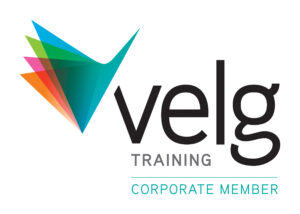A working at heights course is essential for any construction workers and utilities crews working off the ground – as little as two metres off the ground in fact!
This doesn’t seem very high, but with falls from heights being one of the leading causes of death and serious injury on building sites in Australia, it’s critical to know what you’re doing to keep yourself and your mates safe.
Who needs a working at heights ticket?
Workers across a whole range of industries can benefit from height safety training, including:
- Civil construction workers and builders
- Linesman and utility repair crews
- Flatbed truck drivers that may need to climb onto the back of their truck to unload materials
- Roofers (and anyone tiling or painting a roof)
- Solar panel installation teams
- Agricultural workers and harvesters
Height safety training is recommended for any tradespeople or workers in these industries, to reduce the risk of falls and accidents.
The working at heights certificate, RIIWHS204E, is a nationally recognised qualification that proves workers have the necessary competency to work at heights, such as on a roof or a multi-deck construction project.
What does a working at heights certificate allow you to do?
When you complete your working at heights training and obtain your licence, you are certified to inspect, fit and use height safety equipment whilst working at heights.
(You’ll also be able to pull out your working at heights ticket as evidence of training in the use of harnesses and other safety equipment – this is essential for ensuring your site procedures are up to scratch should you receive a visit from your local WHS inspector.)
Course outcomes for working at heights:
- You’ll learn the legislative requirements including WHS, Australian Standard AS/NZS1891.4 2009 and relevant Codes of Practice
- You’ll understand how to plan to work at heights, including managing hazards and consulting with other
- You’ll learn how to follow set procedures, including equipment inspections, reporting and manufacturer’s instructions
- You will learn the ins and outs of working at height such as access, egress and using appropriate height safety equipment such as fall arrest and restraint equipment
- And finally, you’ll learn how to inspect and store height safety equipment and report any hazards
Height safety tips for civil construction
- Eliminate the risk whenever possible: if a task can be done at ground level rather than up high, that is always the safest option
- Never work alone – always work with a buddy when there is potential for a fall
- According to Safe Work NSW, most fatal and serious falls occur from a height of four metres or less, so don’t skip your safety procedures if you think you’re not that far off the ground! Have your SWMS organised for any work above 2 metres.
- Learn the best practices for working at height through a course run by a registered training organisation – make sure you train with an RTO to get the best quality, nationally recognised training
- WHS inspectors often blitz construction sites to check compliance and talk with employers and workers about how to work safely at heights. Making sure your team is adequately trained means you’re not only keeping them safe, but you’re also keeping your project squared away and not leaving yourself open to fines. On-the-spot fines of up to $3,600 may be issued to those placing workers’ lives at risk by not adequately protecting them when working at heights – protect your team (and your bank account) and get your height safety tickets in order.
When is fall protection required?
Safe Work NSW reports that falls from heights are the biggest killer on NSW construction sites, and that “most serious and fatal falls are from roofs, ladders or scaffolds, from a height of between 2.1 and 4 metres.”
The criteria for what constitutes ‘height’ doesn’t seem very high at all: working at heights could mean working as low down as the second rung of a ladder. However, working at any height requires you to have your wits about you at all times, and to understand some critical concepts to keep you and your teammates safe.
A worker must have fall protection if there is a falling hazard that could result in injury or death. This equipment can include a harness, static lines, lanyards and other equipment, as well as environmental controls like edge protection fencing and scaffolding.
All equipment needs to be regularly inspected and checked too, making sure it is not damaged and will still perform in the event of an emergency.
Learning the risks and how to choose, use and manage fall protection equipment is key to keeping you safe, which is why working at heights training is so important!
The risks of working at height
A wide range of risks come into play whenever working at height is involved.
Falls, of course, are the main concern with the potential for serious injury or death. Ladders, work platforms and scaffolding all require approved installation and detailed inspection before they are used to ensure their safety.
Being particularly careful around edges and drop-offs is vital, as is looking after tools and equipment so that they don’t fall from a height and injure other workers below.
Above all, it’s important to always work with a buddy in any potentially dangerous situation at heights. Whether you are working on a multi-story development or a simple residential roof, always have another worker with you in case of an accident.
Safe Work at Heights Course Format (RIIWHS204E)
Course contents
On completion of the course, participants will have a good understanding of:
Legislative Requirements: WHS, Australian Standards and Codes of Practice
Planning to work at Heights: Hazard management and consultation
Following Procedures: Equipment Inspections, reporting and manufacturer’s instructions
Working at Height: access, egress, height safety equipment use
Conclude Work: Clean up, inspection, storage and reporting
Outcome of the Work Safely at Heights course
Finishing this course will give you a nationally recognised Statement of Attainment in RIIWHS204E Work safely at heights.
Working at heights course: online bookings
The Kallibr Training (RTO 32365) team is here to support you and your crew to get certified in height safety. With easy online bookings for working at height training, you can plan ahead and get training for your new recruits organised in minutes!
Our experienced, down to earth instructors make learning fun and engaging, whilst your team learns all the important skills to become competent in height safety procedures.
Plus we offer easy bookings for group height safety training, so you can get the crew together, learn vital skills, and then apply to your local workplace health and safety authority to get your working at heights ticket.
Enrol yourself or your crew in the RIIWHS204E Work safely at heights training course and start working safely at heights. Take a look at the course page for more information and course outcomes, and view our live calendar for upcoming intakes.
Kallibr Training has 5 convenient locations in Carrum Downs, Laverton North, Salisbury, Arndell Park and Ingleburn, allowing workers from VIC, QLD and NSW to train in a realistic environment.




